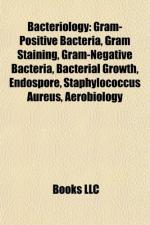|
This section contains 236 words (approx. 1 page at 300 words per page) |
Techniques for staining cells in order to improve their study had been developed as early as the late seventeenth century. Antoni van Leeuwenhoek had found that the addition of saffron dye to cells helped to distinguish certain features of those cells. The invention of synthetic dyes by William Perkin in the 1850s greatly increased the number of colored compounds available for cell staining, while the work of Robert Koch, Walther Flemming, and Paul Ehrlich expanded and improved cell-staining techniques
An important breakthrough in cell-staining methods occurred in 1884, when Danish bacteriologist Hans Christian Joachim Gram (1853-1938) introduced a new technique to the field. Improving on a method originally developed by Ehrlich, Gram found that conventional stains could be washed off some bacterial cells, but not others. In his technique, Gram first treated bacteria with an aqueous solution of gentian violet in aniline, then with a solution of iodine in potassium iodide. When the bacteria were next washed with alcohol, some retained the original stain, but others lost their color. The former have come to be known as gram positive bacteria and the latter as gram negative bacteria.
Gram's technique has become a standard method for classifying bacteria. In recent years, bacteriologists have learned that antibiotic activity tends to correlate with this system of classification. For example, gram positive bacteria are sensitive to penicillin, while gram negative bacteria are more effectively treated with streptomycin.
|
This section contains 236 words (approx. 1 page at 300 words per page) |


